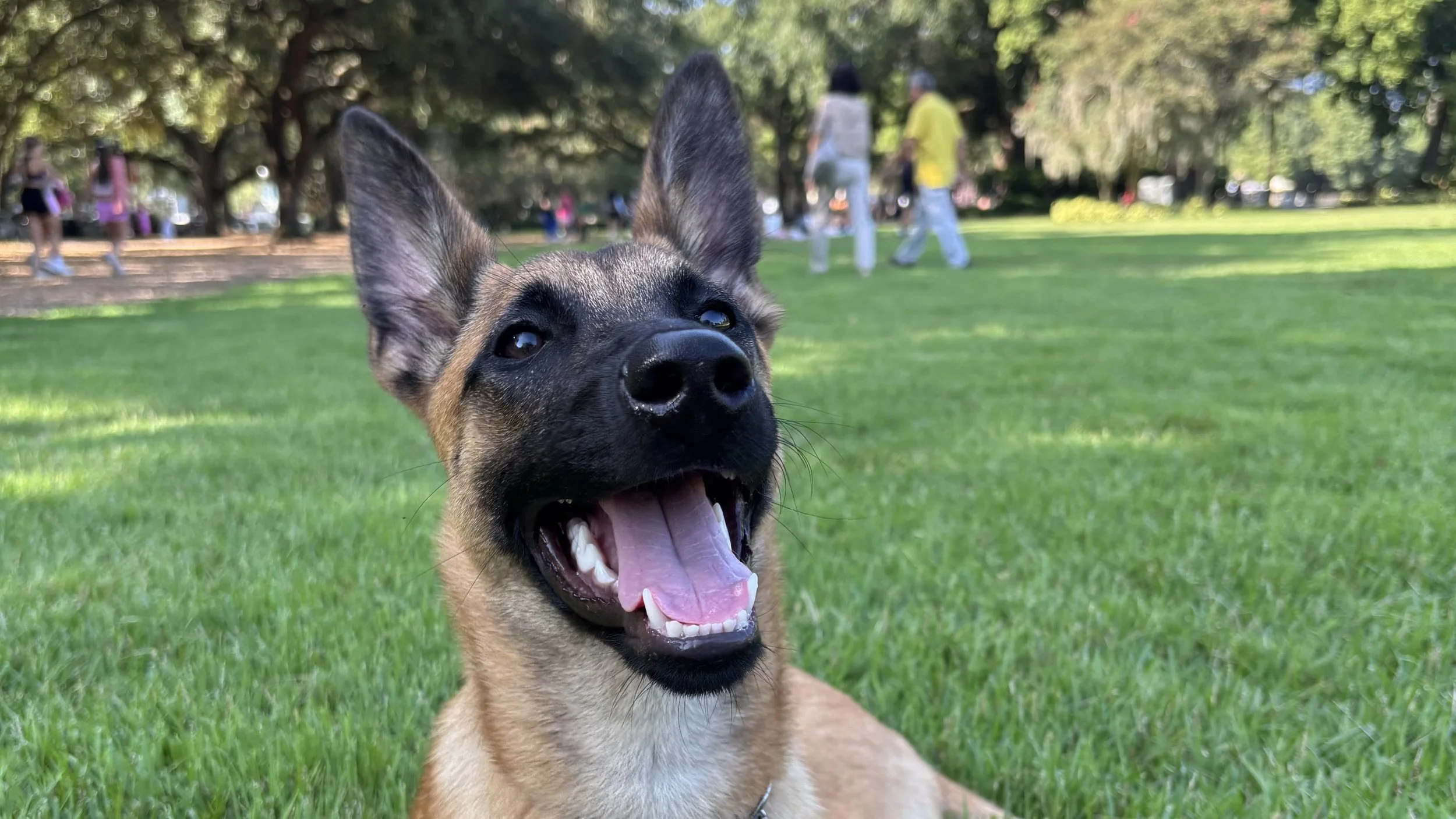



Engagement is the foundation of every great training session. In this lesson, you’ll learn how to spark your dog’s interest, keep their attention, and turn training into a game. Once your dog wants to work with you, everything else becomes easier.
What You’ll Need:
Your dog’s favorite reward (food, toy, praise)
A playful attitude
A short session mindset—stop before they check out

A focused heel isn't just about being next to you—it's about being with you. In this lesson, you'll learn how to teach your dog to maintain eye contact and mental engagement while walking, keeping their attention locked in as you move together.
What You’ll Need:
High-value food
A distraction-free space to begin
Clear body cues and consistent timing

Crawling is a fun and functional behavior that builds body awareness and control. It requires your dog to move intentionally while staying low to the ground. In this lesson, you’ll learn how to shape the crawl using food and clear movement patterns.
What You’ll Need:
High-value food
A smooth surface (avoid carpet or rough textures)
Low object or hand signal to guide them forward

Teaching your dog to hold a command—whether it’s Sit, Down, or Place—is just as important as teaching the behavior itself. This lesson shows you how to increase your dog’s ability to stay in position calmly, even with time and distractions added in.
What You’ll Need:
Treats or part of a meal
A timer or internal count to track progress
Patience, and a calm, low-energy tone

Getting your dog comfortable with being touched, examined, or restrained is essential for grooming, vet visits, and real-world safety. In this lesson, you’ll learn how to build trust through slow, intentional handling—making it a positive experience, not a stressful one.
What You’ll Need:
Treats
A calm space with minimal distractions
Gentle, patient hands

Before your dog can heel with precision, they need to understand where heel position is and how to hold it. This lesson breaks down proper body alignment, front-end and rear-end awareness, and how to cleanly guide your dog into the right position—whether starting from a sit, stand, or movement.
What You’ll Need:
High-value treats or food
Optional: platform or wall to help define straight lines
A quiet space for clean repetitions



Marker words are essential for helping your dog understand what they’re doing right—or wrong. In this lesson, you’ll learn how to use “Yes,” “Good,” and “No” as black-and-white communication tools to mark behavior and build consistency in your training.
What You’ll Need:
Treats
A simple behavior or setup (like Place) to practice with
Luring ability
The Place command teaches your dog to settle on a designated area—great for relaxing at home or maintaining structure in public. We’ll break down how to introduce and build duration on the Place without frustration, so your dog naturally wants to stay there.
What You’ll Need:
Treats or food
A defined “Place” (e.g., elevated bed, mat, towel, etc.)
Patience and calm repetition
The Recall command—getting your dog to come when called—is one of the most important skills your dog will ever learn. This lesson introduces the first steps to build a strong recall, using positive reinforcement to make coming back to you a rewarding experience.
What You’ll Need:
High-value treats or part of a meal
Optional: tug/toy your dog loves (must already be conditioned to it)
Leash (especially for public or high-distraction areas)
In this lesson, you'll learn the most efficient way to teach your dog the core positions: Sit, Down, and Stand. We’ll use luring to guide your dog through each motion and show you how to help them hold position and transition smoothly. These are foundational skills that your dog will use every day.
What You’ll Need:
High-value food or use part of your dog’s regular meal
Luring skills
Optional: platform for clearer positioning
Optional: alignment sticks to monitor paw placement